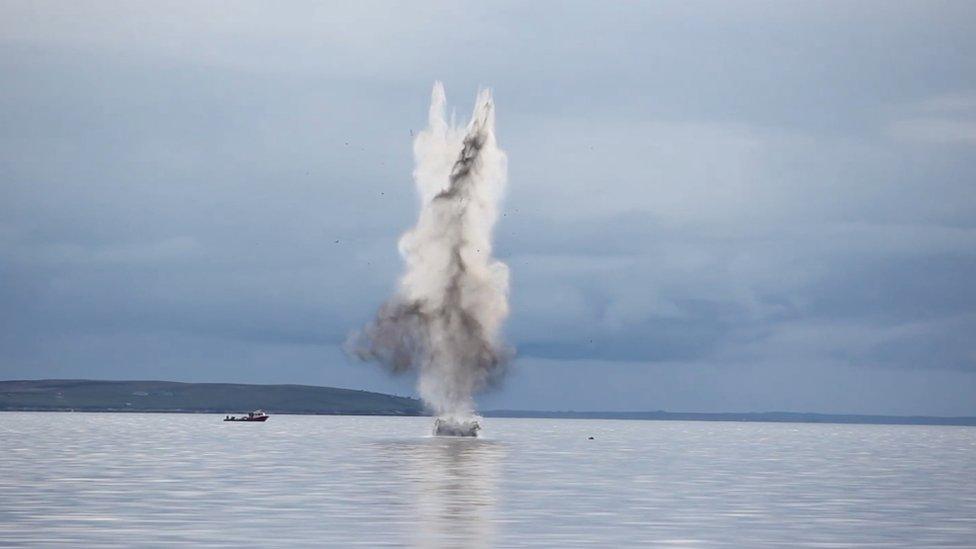Images reveal extent of HMS Royal Oak torpedo attack
- Published
HMS Royal Oak damage revealed in new images
Dramatic new images have revealed the extent of damage to HMS Royal Oak after it was sunk by torpedoes.
The ship was attacked by a German submarine in Orkney's Scapa Flow in 1939, killing 835 crew - including 134 boys.
Video and new images have been released as part of commemorations to mark the 80th anniversary of the ship's sinking.
They were gathered by divers who used the latest techniques to create 3D virtual reality models of the wreck.
'Utter devastation'
Those behind the Royal Oak 80 Survey Team project hope the images will allow non-divers to experience the wreck in a way that was previously only available to those who could visit the designated war grave up close.
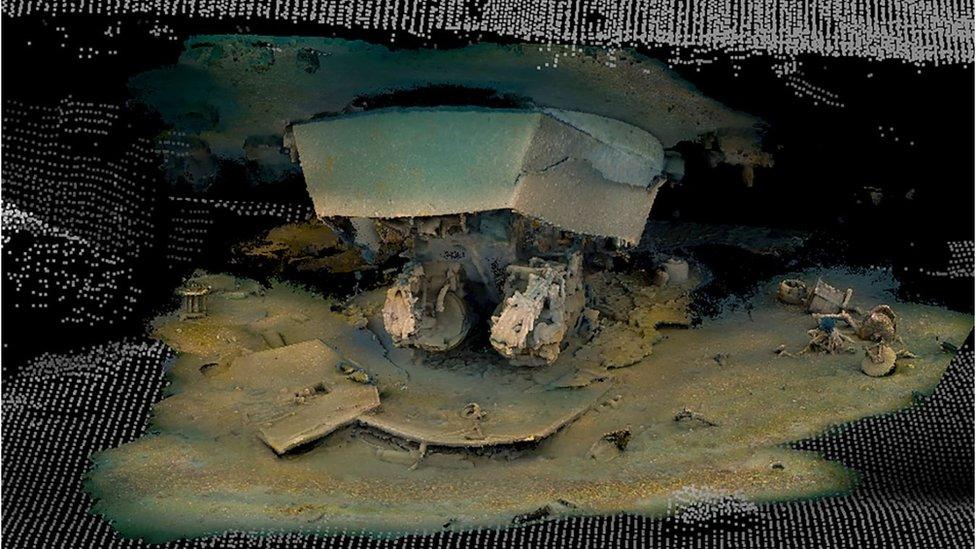
A 3D image of the ship's turret on the seabed at Scapa Flow
HMS Royal Oak was attacked on 14 October 1939 by a U-boat tasked with targeting the Royal Navy's Home Fleet's main base in Scapa Flow.
The ship sank 13 minutes after being struck by a salvo of three torpedoes.
Survey organiser Emily Turton said: "One area we have mapped in detail is the torpedo damage, which, due to the size, cannot be seen in its entirety underwater.
"However, using these new techniques, the team has been able to create a single image of the area and it's quite striking to see the scale of such utter devastation."
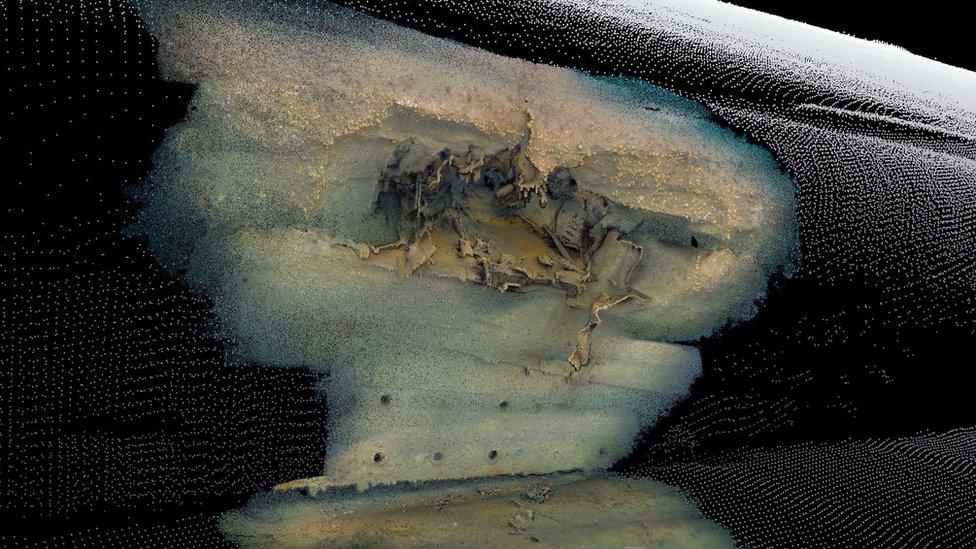
The ship was hit by a number of torpedoes
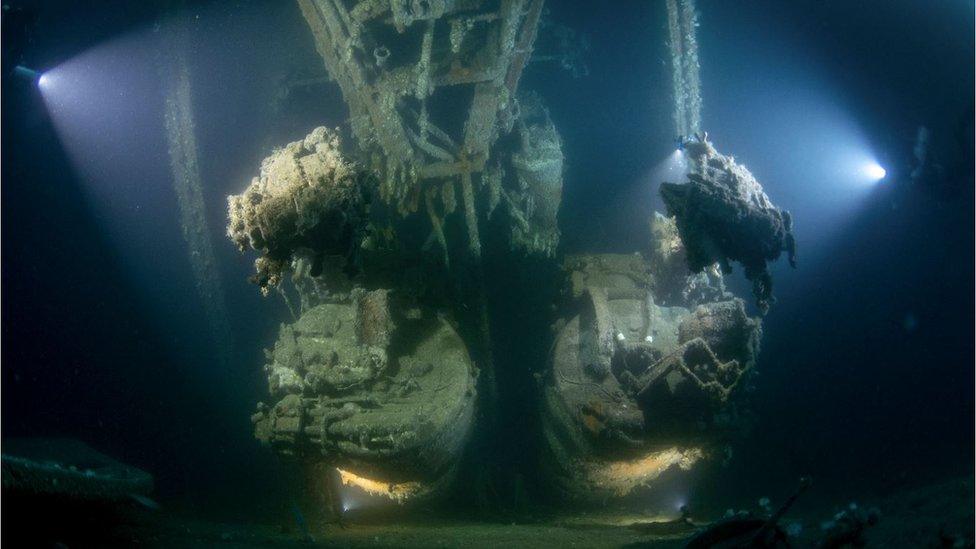
A turret on the wreck photographed by the Royal Oak 80 Survey Team
The project aims to ensure the sinking is not forgotten by helping relatives of those lost, and the wider public, to visualise the ship's final resting place.
The loss of the crew has led to lasting links with the people of Orkney and the relatives of those who died.
The last survivor of the tragedy, Seaman Arthur Smith, died in December 2016.
For many years, the death toll was believed to be 834. However, recent research uncovered details of a member of the crew who died in hospital from burns two weeks after the attack.
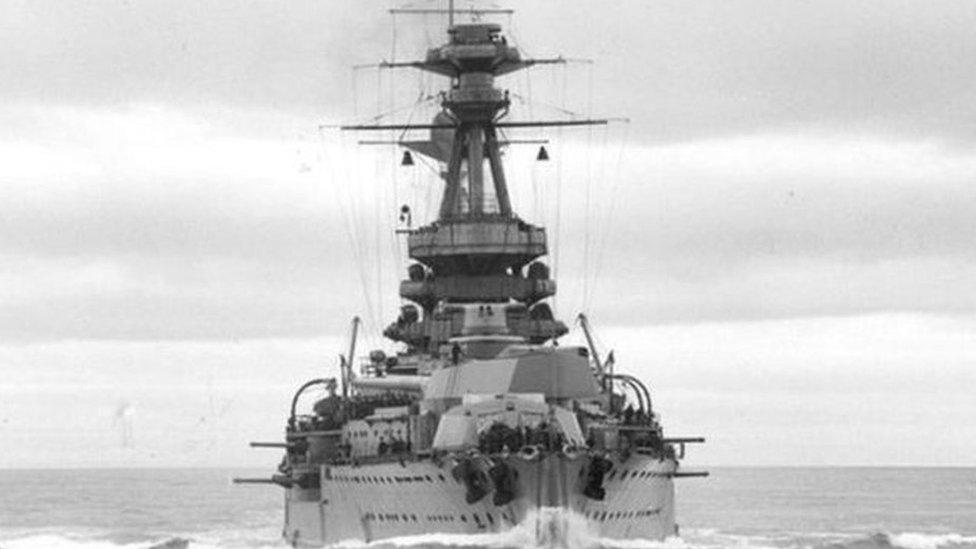
The Royal Oak was sunk by German U-boat U47 in October 1939
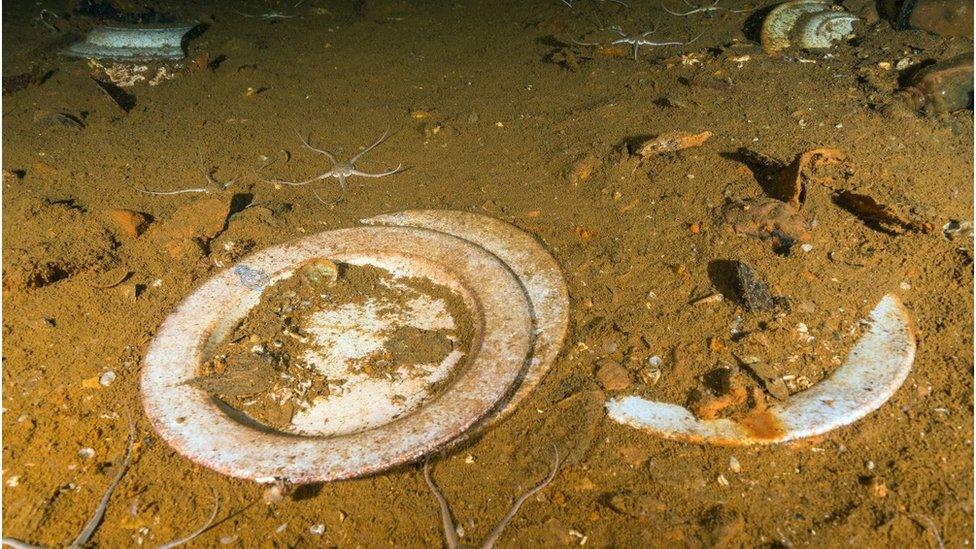
Everyday items such as dinner plates lie on the seabed of the designated war grave site
His name has now been added to the Book of Remembrance, bringing the total loss from the attack to 835.
The survey results are being shared at events planned over the anniversary weekend.
Royal Navy divers from the Northern Diving Group have made their annual visit to Orkney to pay respects to the lost sailors by placing a White Ensign underwater at the ship's stern.
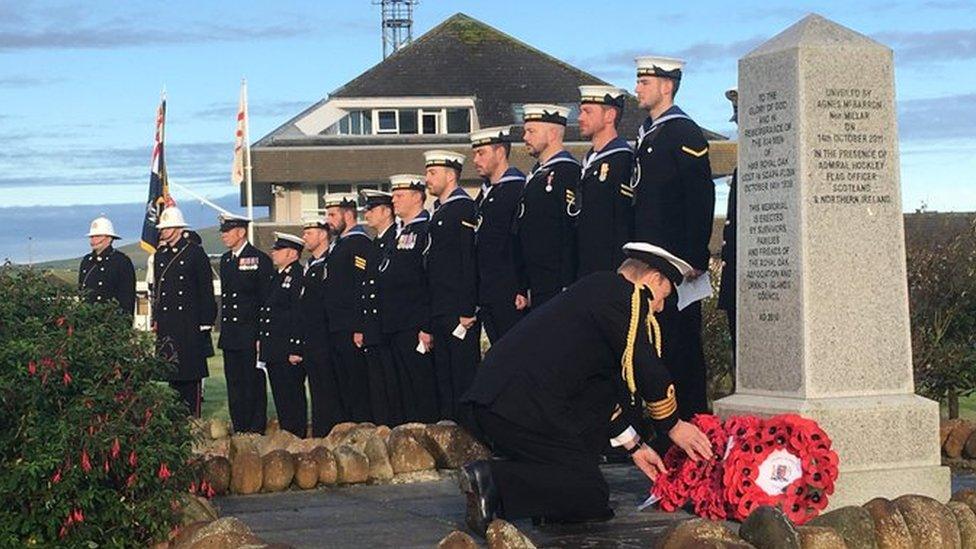
Wreaths were laid at HMS Royal Oak memorial in Orkney
For the first time, 835 flowers will also be scattered on the sea for each of the victims - in previous years plastic wreaths were used.
"Unlike battlefields, such as the D-Day landing beaches of Normandy, naval war graves are less accessible to most people and are more easily forgotten, said Lt Jen Smith.
"Lying beneath the waves, it is difficult for current generations to imagine the significance of these sites and the scale of such a loss."

The site of the wreck in Scapa Flow is protected as a war grave
- Published28 January 2019
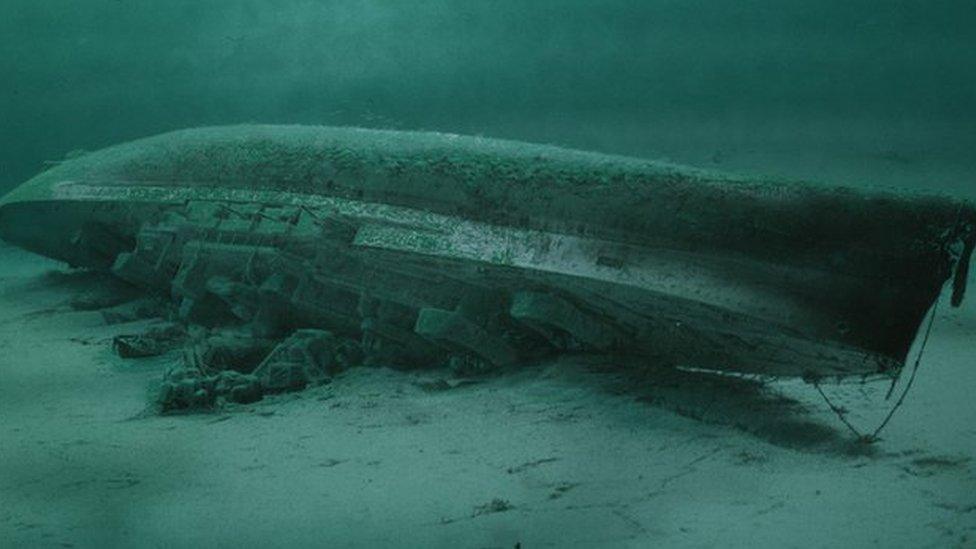
- Published29 May 2017
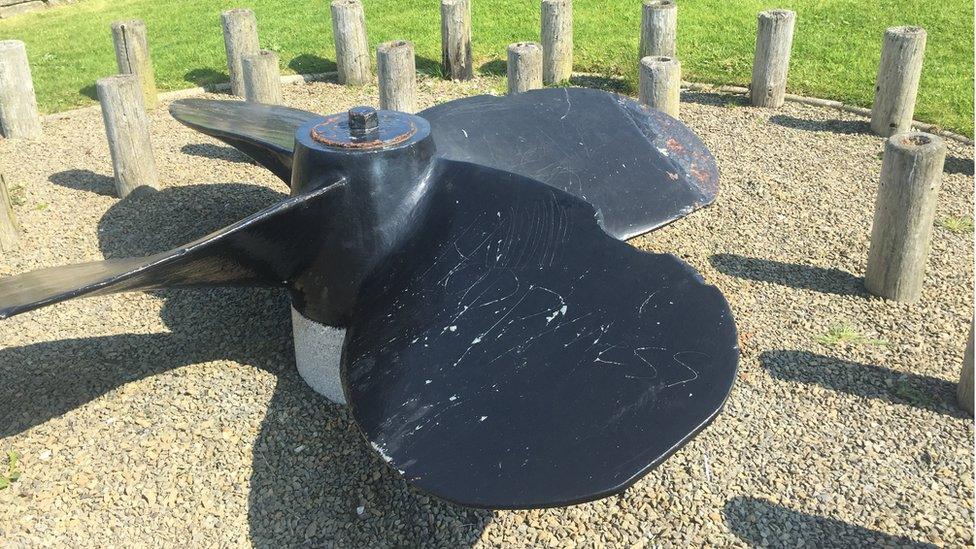
- Published6 April 2016
